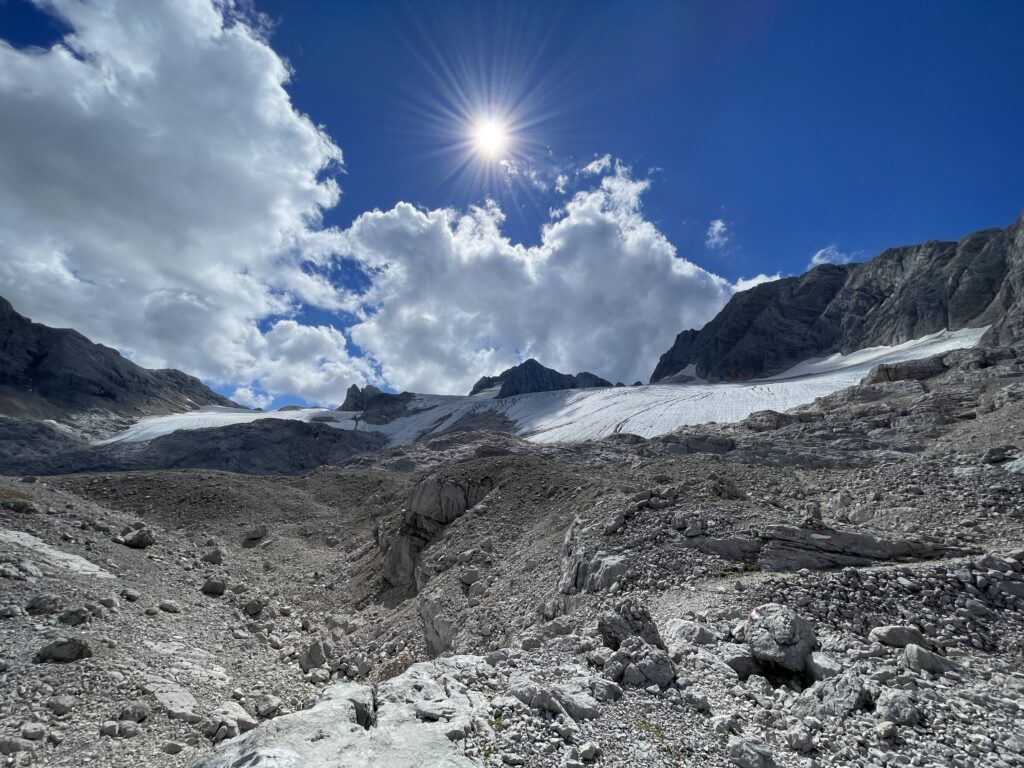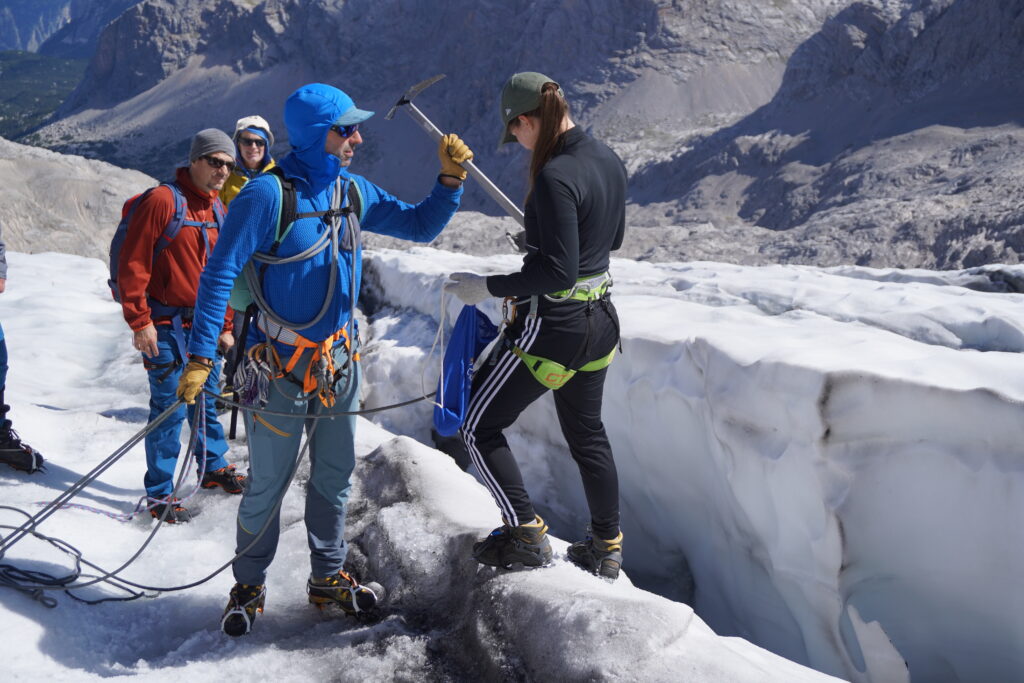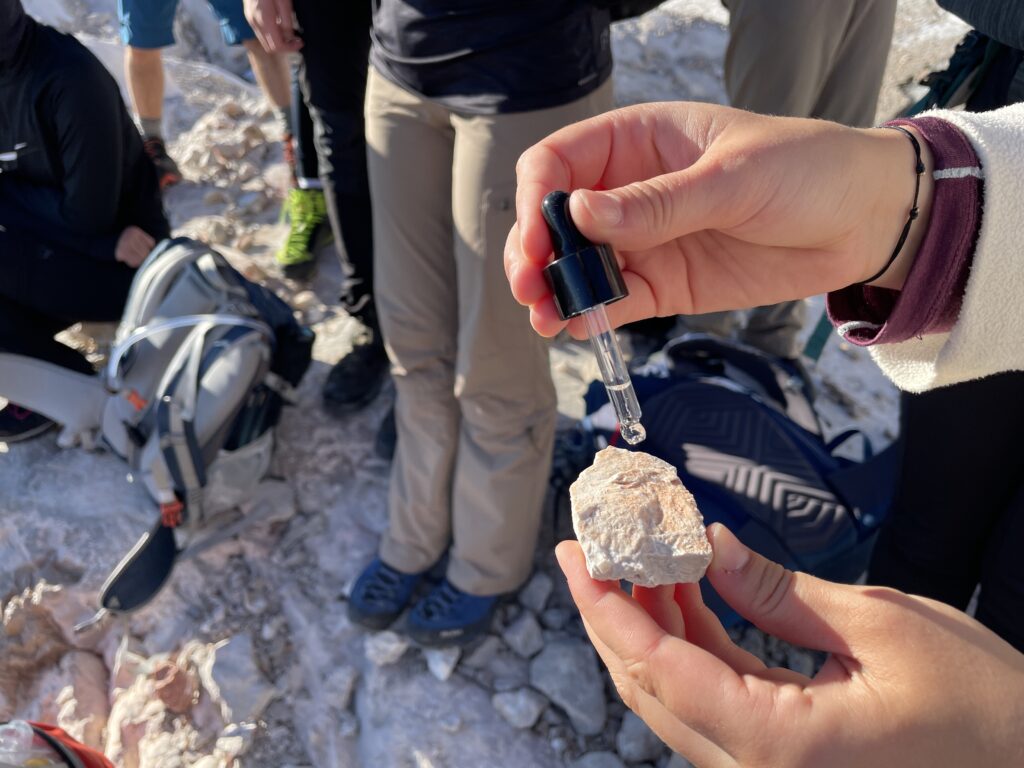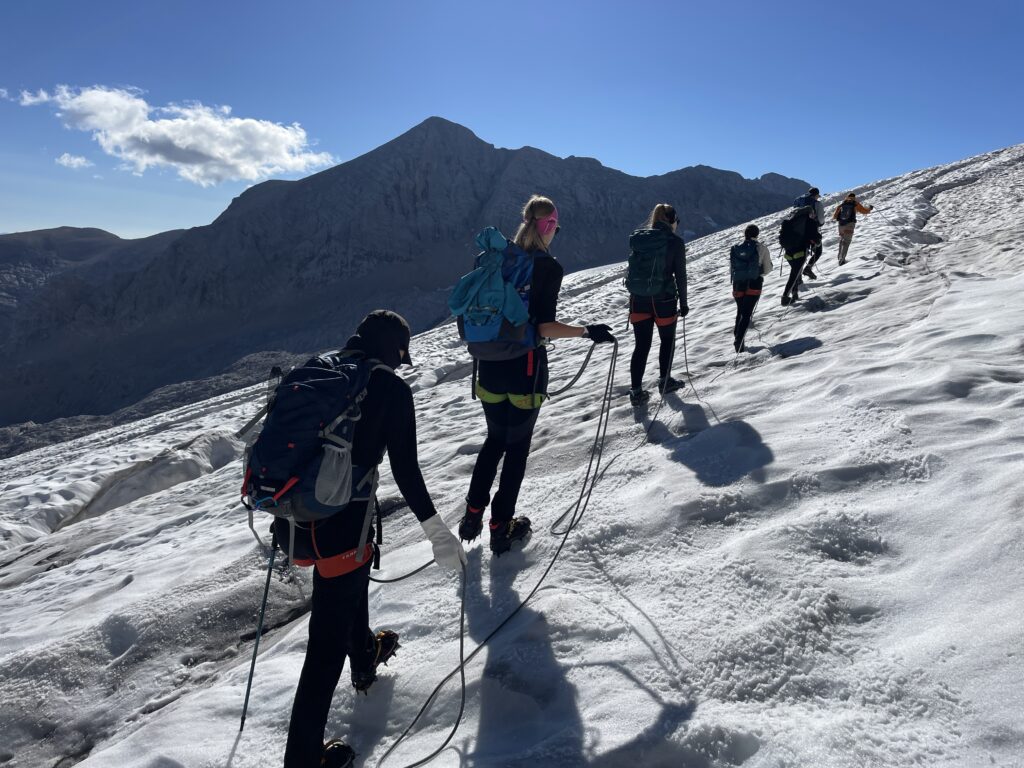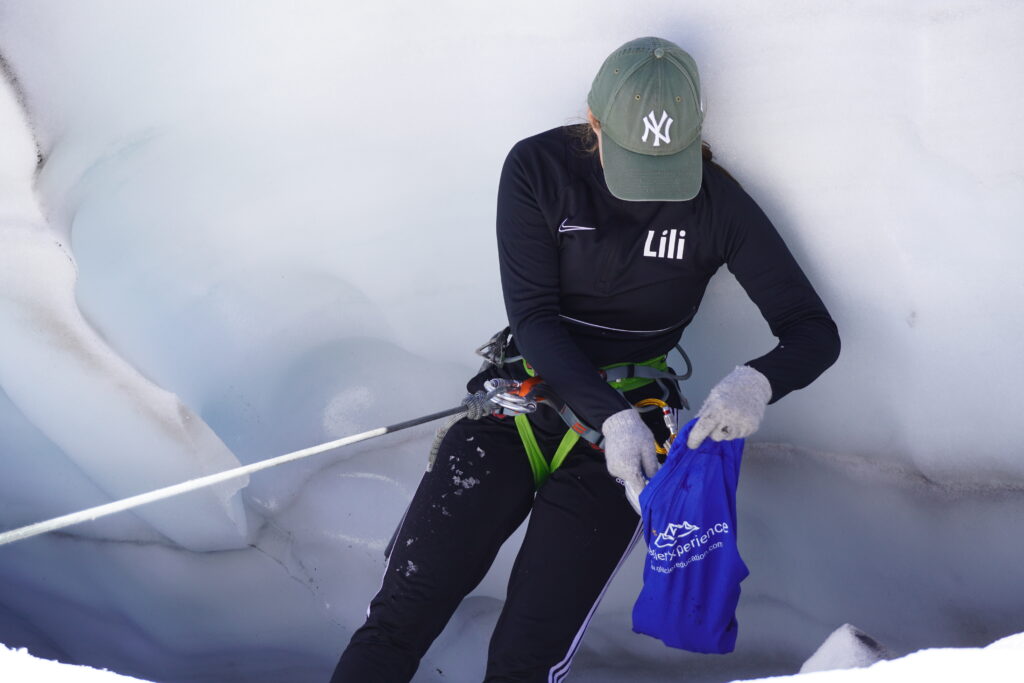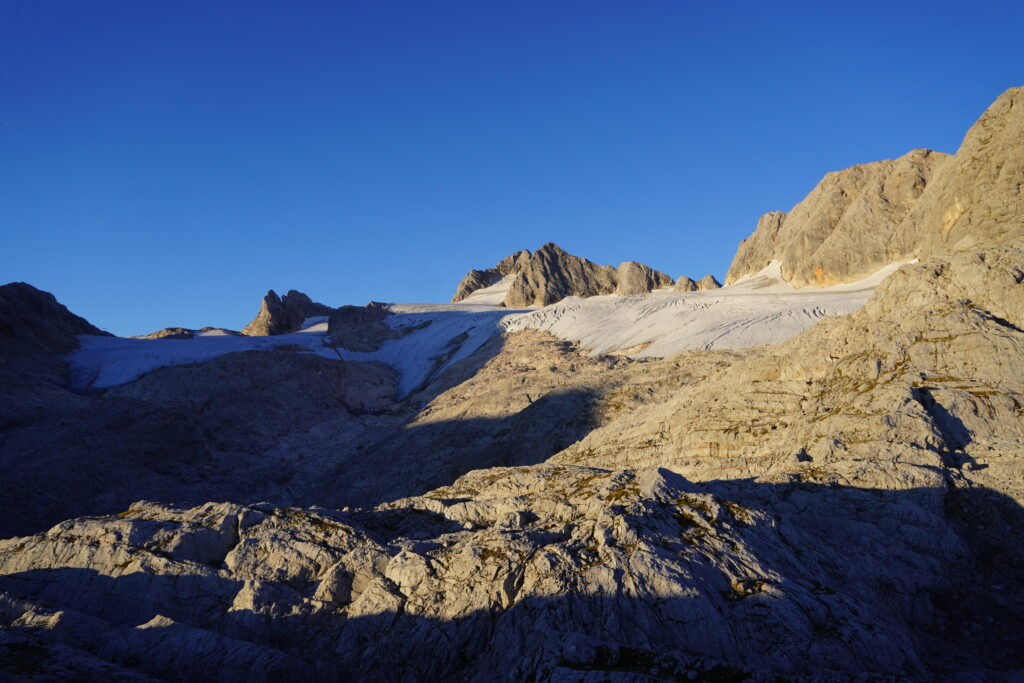
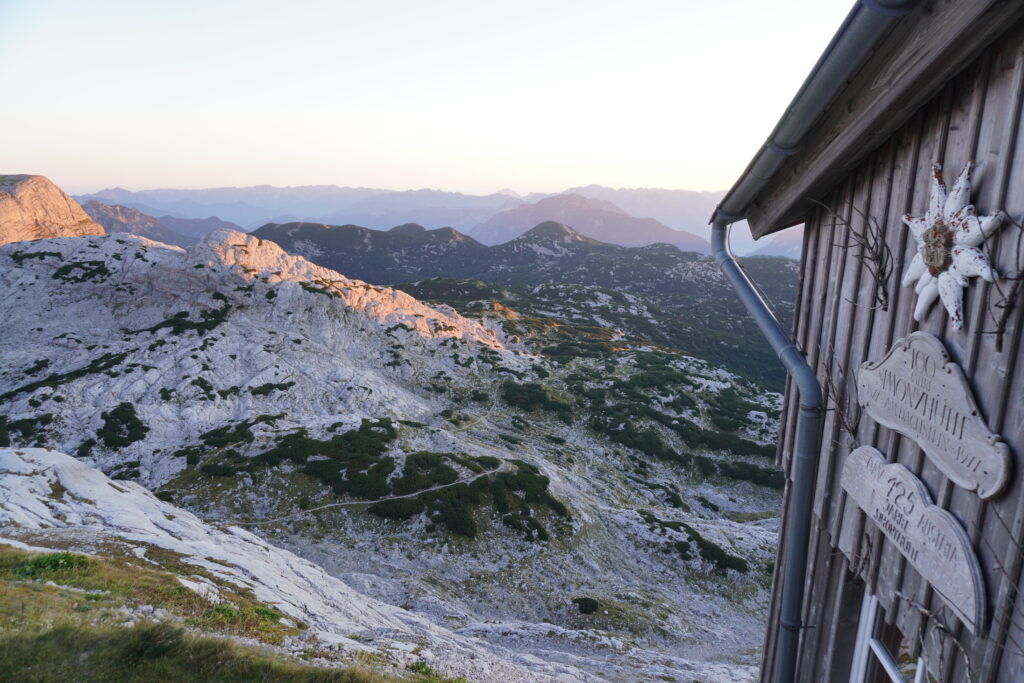
After a beautiful sunrise at an altitude of almost 2300 meters, we headed towards the glacier early. Armed with crampons and led by our two mountain guides Christoph and Michael, we walked 45 minutes through the former glacier glacier to the current edge of the glacier. When we arrived at the glacier, the crampons were put on and two rope teams were formed.
The goal of today was to explore the glacier in more detail. The rock could be examined from the first step onto the glacier. With the help of hydrochloric acid we were able to find out that the rock must consist of carbonate. When putting on the crampons we were able to take a look at the terrain formed by the glacier. Ten years ago, the path from the Simonyhütte to the glacier was still largely covered by a thick layer of ice.
First we went over the somewhat flatter area of the glacier. The goal was the first crevasses. A few samples of Krykonite have already been obtained along the way. The sample of the dark layer that covers the glacier in many places is dried in the chemistry room after the trip to the glacier and then examined. After taking the sample, the students were able to use a light meter and a thermal imaging camera to examine the albedo radiation and the different heat retention of rocks and ice. After just a short walk on the glacier, the first crevasses appeared. We were able to stop at a particularly large one. Here a student had the opportunity to collect some ice samples from the crevasse.
The ice sample was melted and examined and compared in the evening in the hut with a sample of snow and a water sample from the ice lake below the glacier in terms of pH and conductivity.
After a few hours on the glacier and a total of over 9 kilometers of walking, we went back across the ice lake to the Simonyhut.
